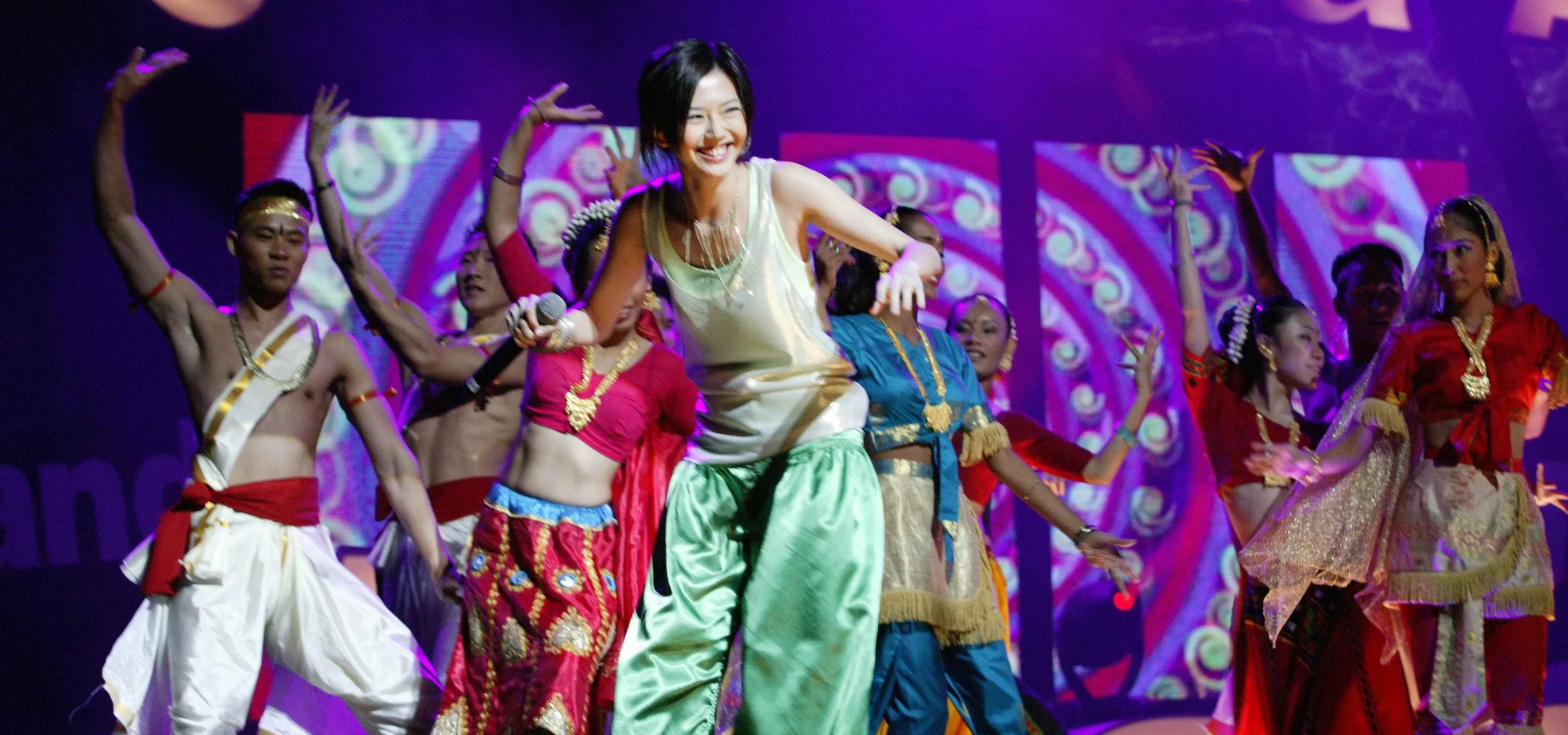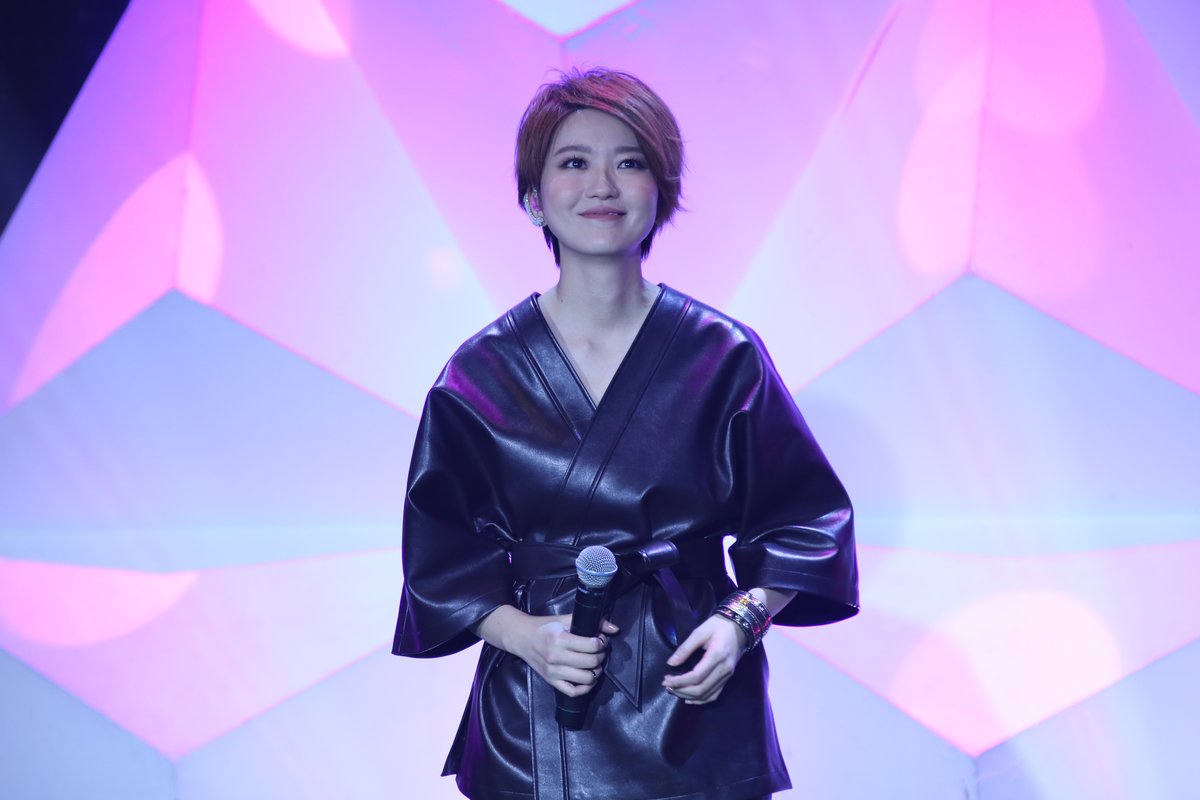Singapore artists used to be Mandopop royalty, but new acts are struggling to make a breakthrough
It might only be a tiny dot on the map, but Singapore’s influence on the Chinese music industry is anything but small. When an AI hobbyist put out a deep-fake version of Stefanie Sun, one of the city-state’s most successful singers, and got her to cover 1,000 songs back in May, the video achieved millions of combined views on streaming platform Bilibili. It also triggered a flood of nostalgia from Chinese netizens reminiscing about their musical idol of the early 2000s.
With a population of only 5.45 million, Singapore’s music market is relatively small, but linguistically diverse. According to a 2022 survey by the National Arts Council (NAC), around 63 percent of Singaporeans listen to English music, 50 percent to Chinese music, 14 percent to Korean, 10 percent to Malay, and 6 percent to Tamil—capturing all the major languages spoken on the island as well as the pervasive power of K-pop. The survey also found that 67 percent of Singaporeans listen to “local music,” referring to music composed or performed by citizens of the country.
However, despite the stratospheric success of a select group of Singaporean Mandopop singers, back home the grassroots Chinese scene is struggling to find spaces to perform—and even audiences to perform to. Local musicians are trying to find their place in a traditionally export-focused musical ecosystem, and looking to empower a new generation of performers and listeners in the process.
As a subsection of the whole market, the Singaporean Chinese music market is dwarfed in size by its neighbors in Beijing, Taipei, or even Hong Kong. But the island has consistently produced a trend of regionally iconic local artists. According to Singaporean awards and media platform Freshmusic, the golden age of Singaporean Chinese-language music in the early 2000s saw superstars JJ Lin, Stefanie Sun, and Tanya Chua propel themselves into the top echelons of Mandopop royalty, a position the three all still hold today.
Back at home, acts such as singer-songwriter Marcus Lee, millennial indie rockers Homeless Scholars, retro-funk musician Pew, and rapper JM3 are just some of the independent acts making waves on the grassroots scene.
What is the “Singapore sound?”
In the NAC’s Deep Dive 2021 survey on local music consumption, locals talked about the uniqueness of Singaporean music as compared to international acts—for example in terms of its use of Singlish, the dialect of English spoken on the island that incorporates Chinese (including Hokkien, Cantonese, and Teochew), Malay, and Tamil influences. However, when it comes to pinning down the exact qualities of this sound, especially in terms of Chinese-language music in Singapore, there isn’t a clear consensus.
Speaking to TWOC, Shelby Wang (王晓敏), a Singaporean singer-songwriter points to the importance of xinyao (新谣) in the history of Singaporean Chinese music. Xinyao, loosely translating as ‘Singaporean ballads,’ comes from the phrase “ballads self-penned by Singaporean youth (新加坡年轻人自创歌谣).” This genre, which reached its height of popularity in the 1970s and 1980s, was partly inspired by the campus music craze happening at the same time in Taiwan. It saw an embracing of Mandarin language folk music created by young Singaporean student singer-songwriters, including Eric Moo, Liang Wern Fook, and Billy Koh (who later helped launch JJ Lin’s career).
Joi Chua (蔡淳佳), who also rose to mainstream success across the Sinosphere in the early 2000s before switching gears to self-produce her own music, concurs with the importance of the xinyao genre. She herself was discovered when she entered a xinyao singing competition as a 15-year-old.
However, talking to TWOC about her experience of the scene, she also points to the so-called “kampung spirit” of older generations. This refers to the communal kampung (villages) Singaporeans lived in before the advent of housing estates, which for Chua evokes “a sense of pureness, [and being] very down to earth, very local. It’s a sound that you don’t hear anymore.”
Others, such as singer-songwriter JJ Lin, highlight the significance of a multicultural and multi-ethnic society to the Singaporean sound. “I understand Chinese and English and their cultures and I’m also familiar with Malay and Indian culture,” he told Singaporean newspaper Lianhe Zaobao back in 2018. “You can see elements of all these cultural influences in the way I write my songs, the instruments I use, the people I collaborate with. That makes my music unique.”
Where have all the artists gone?
But for many Singaporeans, the image of local Chinese music has stagnated around the legacy of xinyao and the overseas successes of the holy trinity of Lin, Sun, and Tanya Chua. Wang suggests that most Singaporeans associate Chinese music with the break-up-themed and ballad-style songs popularized by these artists and their contemporaries in the early 2000s.
The Deep Dive survey by the NAC found that many Singaporeans are not familiar with current local acts, and could only recognize those such as Lin who have had popular success abroad. Yet Lin, Sun, and Tanya Chua all got their breaks through launching their careers in Taiwan, rather than back at home. This raises the question of whether they are truly representative of “home-grown success,” rather than Taiwanese incubation.
Wang worries that this can even lead locals to missing the diversity in genres and sounds of the grassroots Singaporean Chinese music scene, such as alternative rock band The Goose or her own sound, which draws on both blues and electronic elements. Her concerns have been echoed by others in the city, encapsulated in a provocative 2021 article on music website Bandwagon, “Gen-Zs: why do you hate Singaporean music?” which pointed out the lack of traction and support for homegrown talent.
Joi Chua and Wang both refer to a lack of opportunities to perform live music in the city, especially the small-to-medium-sized venues which can nurture grassroots musicians. Asian Pop Weekly editor Jocelle Koh, who also works in music distribution across Singapore and Malaysia for Believe Music, attributes this both to venues closing down during and after the pandemic, and to the high rent for spaces in the city.
Ultimately, though, “the market doesn’t really want [more live venues],” she tells TWOC. Although Singapore is a hub in Southeast Asia for hosting international artists’ concerts—recently holding sell-out dates for Blackpink and Phoebe Bridgers, among others—Singaporeans “don’t support local music.”
This lack of financial incentives for physical music venues leave many local musicians to gamble on achieving success on the internet. “Singaporean artists are heavily reliant on the reach and support they get from streaming platforms and social media due to the lack of performing opportunities and live venues around,” Koh says. “While this means that they’re skillful and adept digitally as compared to other Southeast Asian markets, there’s still a massive piece of the puzzle”—that is, live music—“missing, which has historically contributed significantly to musicians’ income, audience engagement, and therefore potential to scale in the long term.”
Are indie acts the future of Singaporean music?
“The focus of Singapore is not on entertainment and music. It has always been hard,” Joi Chua tells TWOC. “There were very few singers back in the day and there is very little space in the mainstream market, so most people go indie.”
She notes that most musicians she knows are self-financing their creative endeavors, often working two jobs so that they can support their musical career—something she knows only too well as an optometrist who paid for her most recent releases out-of-pocket. Wang notes that the lack of artists means local audiences can’t exclusively listen to Singaporean Chinese music, simply because there is not enough of it.
However, Wang believes the scene is “evolving” into a new era. To this end, together with fellow artists like Meiting and The Goose, she is putting on a biannual music festival called One Degree Off, featuring local Mandarin acts. Wang and the other artists are jointly self-funding the budding venture, with the first performance on June 24 this year, and hope to eventually grow the event to a level where they can invite overseas Chinese acts to perform alongside locals.
She also points to the supporters of local artists in forms of events such as the Huayi-Chinese Festival of Arts held at the Esplanade Theater, and websites championing local independent music, like Bandwagon.
Yet it is also clear that venturing abroad is still a natural move for young Singaporean Chinese singers. While Asia Weekly once described the recipe for Mandopop success as “Southeast Asian singer + Taiwanese production + going viral on the Mainland,” China’s Jiemian News suggested in 2017 that “as Taiwan’s Mandarin pop music has lost selling power, so new Singaporean artists have lost the ‘stepping stone’ that was the Taiwanese market.” Many young musicians are instead choosing to go straight to the mainland, among them the 2016 finalist of Sing!China, Nathan Hartono.
Many key players in the industry also pointed to the importance of not putting different languages into silos. “There’s no need to segregate the different languages and have all these separate award shows,” said rapper and songwriter Akeem Jahat when speaking about Singapore’s scene more generally in a 2018 interview with Bandwagon.
Time will only tell if the government-backed promotional projects or artists’ self-funded efforts can inspire a homegrown revolution in Singaporean Chinese music, or give birth to a truly grassroots star. While there is no shortage of talented artists in the city, there does seem to be a lack of people aware of or willing to listen to them. What’s missing are the live venues, the word-of-mouth reviews and cult followings—in other words, the hype.
Written by Sinead O’Connor













